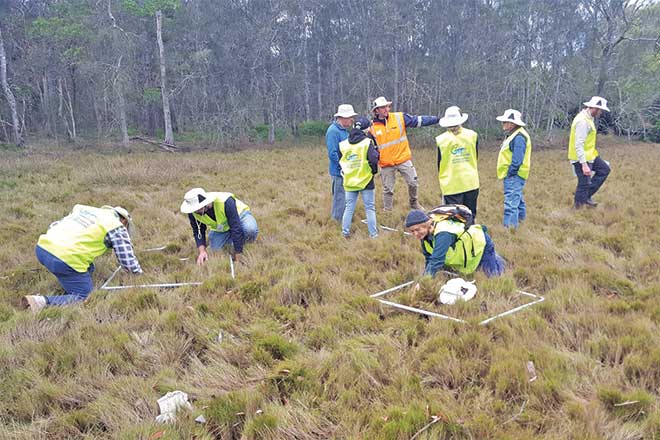If we want the old saying of ‘there’s plenty of fish in the sea’ to remain true, then saltmarsh restoration is a key issue that needs to be addressed.
OzFish Unlimited has been working hard on its ‘Saving Our Saltmarsh’ project on the lower Richmond River estuary as a way of helping to resolve this problem, which can be found throughout Australia’s shorelines.
Members from the Richmond River Chapter have volunteered many hours of their time for this project which, as local recreational fishers, they are incredibly passionate about making a sustained success.
Saltmarsh and other lowland threatened ecological communities that accompany them – including the swamp floodplain sclerophyll forest, the coastal floodplain forest and the lowland floodplain rainforest – are critically important to the health of the lower Richmond River.
These ecological communities are important to maintaining water quality and bank stability – which ultimately reduces erosion – and as a vital fish habitat and food source for several native and recreational fish species.
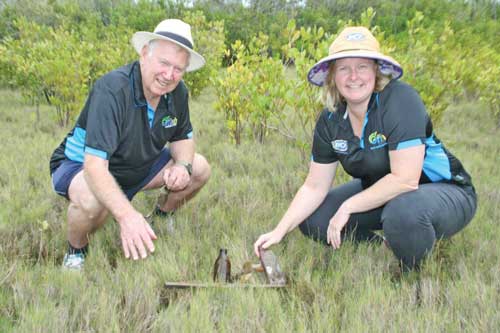
OzFish Richmond Chapter volunteers, Ballina Shire Council and Jali Local Aboriginal Land Council had noted the historical decline of these communities and as a result, the loss of their benefits on the Richmond River.
These groups joined forces to take action to protect and improve the remnant portions of these communities remaining in the region.
Using local expertise in conservation and land management, Traditional Owners and Richmond River Chapter members, the volunteers worked on this partnership on public and private lands along the Richmond River.
They have put up fencing, removed weeds and rubbish from illegal dumping, formalised access points and used vegetative buffers to protect and improve these important threatened ecological communities.
OzFish director of habitat programs Cassie Price paid tribute to their dedication in improving the environment for the local community and the aquatic species who rely on it.
“Saltmarsh damage can take up to 20 years to recover and when you know that and how important it is for fish, you’re much more careful about standing on it or driving on it,” Ms Price said.
“Saltmarsh plants are entirely fascinating – mostly grasses and small succulents.
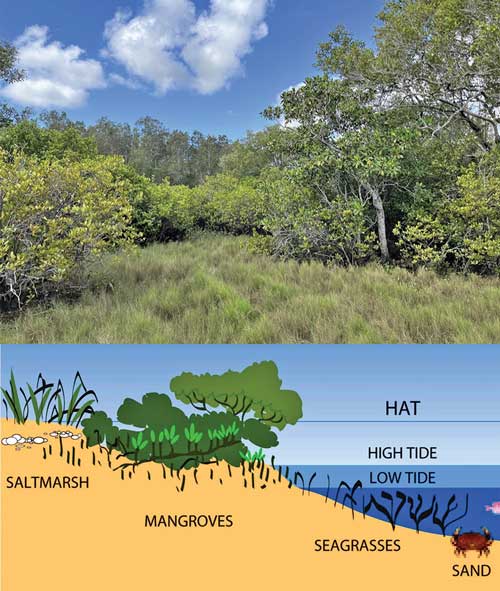
“They have developed the most amazing coping mechanisms for the level of salt they need to deal with.
“And they’re edible too, you might see them on the menu at your favourite fancy restaurant.
“It was a pleasure to share my saltmarsh knowledge with the Richmond River Chapter fishers – they were blown away by the importance of saltmarsh to their fish and some of the fascinating facts about the plants.
“I know they don’t look at the grassy salty plains the same way they used to.”
The aim of this project is to not only protect and restore the saltmarsh but to raise awareness of its role as a vital fish habitat.
Saltmarshes are essential for healthy fisheries as they provide food, refuge or a nursery habitat for our fish and other aquatic life including shrimp and blue swimmer crab.
Over 70 percent of all recreationally targeted saltwater fish species are thought to rely on saltmarshes for at least some of their life cycle.
The saltmarsh is high in nutrients for estuarine and ocean species.
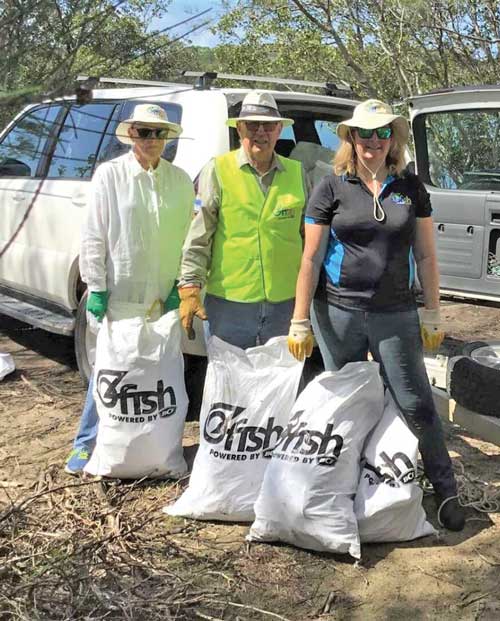
This area is only inundated with water on the super high tides, which means it’s collecting nutrient-dense food over time before being carried out to the estuary.
It is also a nursery for smaller species such as flathead, bream and prawns to get up into these areas and feed in a habitat that also acts as a safe haven from predators, especially in those early stages of their life.
The Saving Our Saltmarsh project on the Richmond River is being conducted over a five-year period.
The main areas of habitat restoration at Fishery Creek, North Creek and South Ballina will be monitored on an annual basis, to get a gauge on the progress that has been achieved from the hard work of the volunteers, with OzFish members already racking up more than 100 hours on this project.
At Fishery Creek, indications were that there has been a slight increase in the coverage of saltmarsh plants and a slight decrease in dead plants, which was a positive result.
OzFish senior project officer Taylah Kirk said, “We observed a small decrease in the crab and snail population.”
“There was an increase in the mangroves growing into the saltmarsh area, which is less positive and likely a result of higher tidal reach over 2021 as a wetter year than 2020,” Ms Kirk said.
At the North Creek site, there was a decrease in the saltmarsh plant coverage but less of it was dead plant cover – a net positive.
There was also an increase in the crab and snail population.
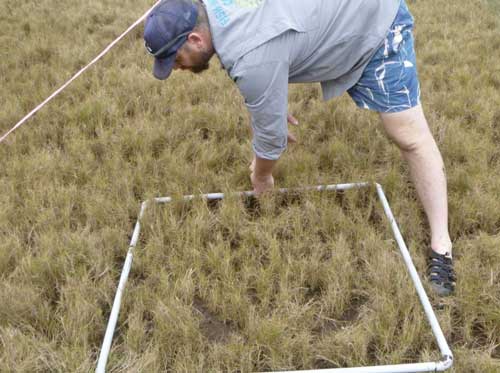
“With reduced weed impact and less litter and dumping impact from the work of our local OzFishers, the saltmarsh is thriving and the data clearly shows an improvement in the health of almost 20 percent,” Ms Kirk said.
“At the South Ballina site there was a decrease in the dead saltmarsh plants and a healthy coverage of plants overall.
“The crab and snail population remained the same.
“OzFishers have been working to remove the litter washing up with the tide at this site and the effect has been noticeable in the data, with a 5 percent increase in overall health at the site.”
All three sites are still considered healthy, and Ms Kirk said they hoped to see continued improvement in the next survey.
“Our hard-working volunteers are going to make surveying over the next five years possible,” she said.
“Volunteers are a very important and valued aspect in our OzFish community.
“Several of our projects would not be possible without our fisho volunteers.”
The program is being funded by the NSW Government through a partnership between the Saving Our Species program and the Environmental Trust and supported by the NSW Recreational Fishing Trusts.
Paul Suttor
OzFish
 Bush ‘n Beach Fishing Magazine Location reports & tips for fishing, boating, camping, kayaking, 4WDing in Queensland and Northern NSW
Bush ‘n Beach Fishing Magazine Location reports & tips for fishing, boating, camping, kayaking, 4WDing in Queensland and Northern NSW

